Can cod comeback keep a Canadian fishery afloat?
- Published
'We wasted the last 24 years'
A generation after Canada declared a moratorium on northern cod fishing off the coast of Newfoundland and Labrador, the species is making a comeback. But can the province's troubled fishery survive to take advantage of cod's resurgence?
The wharf in Petty Harbour is quiet, and Todd Chafe, a 46-year-old fisherman, is slicing up cod for a nearby family restaurant in a shack near the water.
"Some fellas like to point fingers: 'Ah, this done it, foreigners done it'," he says.
Chafe is talking about the collapse of northern cod off the coast of Newfoundland and Labrador 25 years ago.
"We all done it, every single person that went fishing done it. Everybody fished for it so everybody had a hand in destroying it."
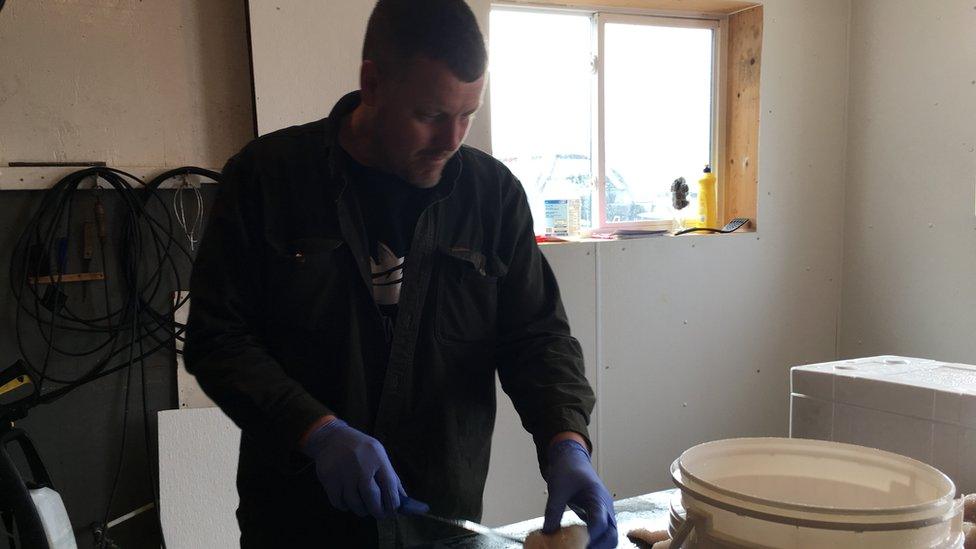
Todd Chafe has been fishing since his early teens
On 2 July 1992, after decades of bungled fisheries management, Canada put an end to a cod industry that had supported rural Newfoundlanders for 500 years.
Stocks of the once mighty northern cod had fallen to an estimated 1% of 1980s levels. The government had overestimated how many cod there were and didn't act when it first became clear the fish were disappearing.
That day, in a St John's ballroom, federal cabinet minister John Crosbie announced a moratorium on cod fishing. Angry fishermen pounded on the barred doors trying to get in.
Overnight, 38,000 people were put out of work in Newfoundland and Labrador - the single largest layoff in Canada's history.
Crosbie promised the moratorium would only last about two years. It's been more than 20.
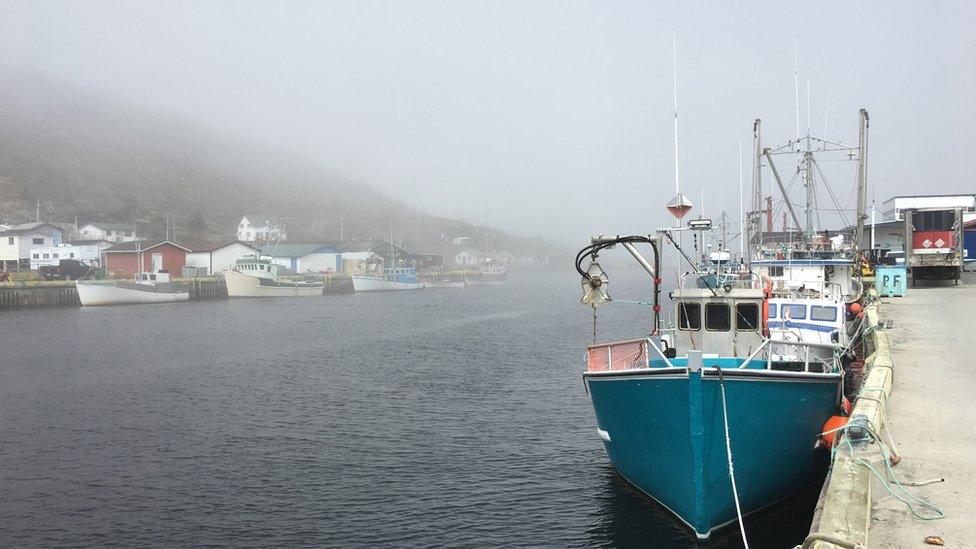
Boats in Petty Harbour, one of Newfoundland and Labrador's oldest fishing communities
Now there is a glimmer of hope. Northern cod stock has reached about 25% of the levels seen in the '80s.
But there is a fierce debate over what the return of cod fishing should look like in Newfoundland.
Musician Arthur O'Brien entertains the lunchtime crowd at Chafe's Landing, a popular Petty Harbour restaurant, with songs about Newfoundland and Labrador.
As a child, O'Brien used to be part of the fishing economy.
"Right here you're sitting off what was once one of the best fisheries in the world," he says after his set.
Musician Arthur O'Brien sings about the end of the cod fishery
O'Brien hails from Bay Bulls, a nearby coastal community. Like many children in fishing villages, O'Brien was a "wharf rat", making pocket money cutting out and selling cod tongues by the dozen or the pound.
Bay Bulls - a fish processing hub - was one of the hundreds of rural towns whose economic backbone was the inshore fishery.
The inshore fishery is relegated to smaller boats that are essentially small independent businesses, unlike the industrial-sized trawlers that fish further out in the Atlantic.
A lot of things changed after the cod fishery was shut down, the 43-year-old recalls. People left the Atlantic province in droves, losing about 14% of its population.
"Every Newfoundlander has someone gone away. Everybody," says O'Brien, who gets a big reaction when he sings about locals leaving to work in the Fort McMurray oil fields in Alberta.
Some 18,800 people from the province went to work in the western province between 1996 and 2006 alone.
Until recently, the decade-long oil boom in both Alberta and in the waters off Newfoundland helped fill the gap left by cod.
But low oil prices have sent unemployment rates in the province ticking upwards and squeezed government revenues.

Production from the Hibernia oil fields off the coast of Newfoundland began in 1997
Crab and shellfish also gave fishermen a reprieve, but now those stocks are also showing signs of stress.
In April, angry fishermen forced their way into the headquarters, external of Fisheries and Oceans Canada (DFO), while others burnt their gear in front of a regional office over cuts to shrimp and crab quotas.
The same month, another fisherman, Richard Gillett, went on a hunger strike, external outside DFO offices in St John's, demanding a meeting with the federal fisheries minister.
Then in June, search and rescue workers had to airlift the crew of a fishing vessel to safety after they were caught in thick sea ice. The ice has delayed the snow crab season, another source of income.
Neil Ward's son was among the men rescued as the vessel sank below the ice.
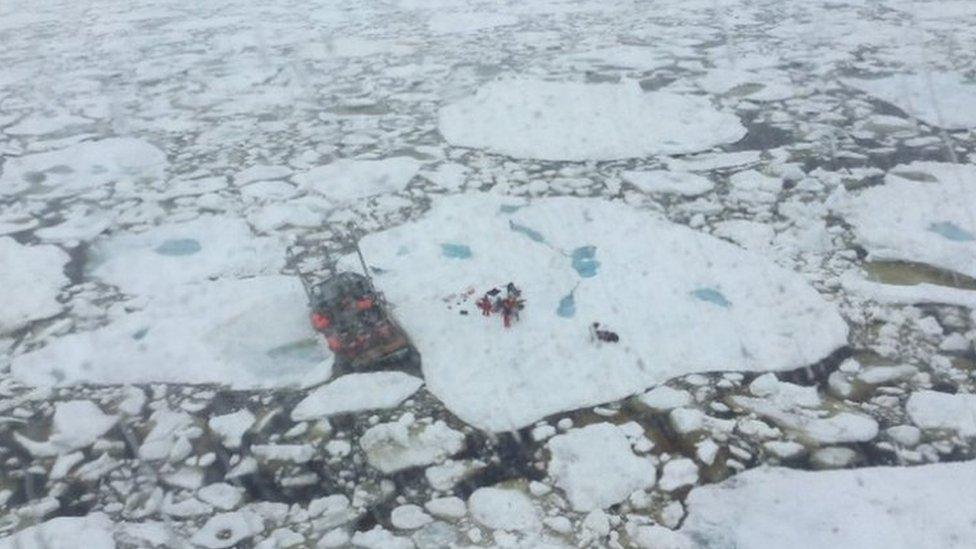
Five crew members from a La Scie fishing vessel trapped in ice and taking on water
"For them to be doing this, it shows how desperate people are," Ward, a store owner in the coastal town of La Scie, Newfoundland, says. "They're willing to take the risk."
DFO has begun to loosen the moratorium, if only slightly. In 2017, the agency extended the length of the cod fishing season and doubled the weekly catch limits in most regions under a "stewardship fishery" programme.
Fish, Food and Allied Workers Union (FFAW) President Keith Sullivan calls the current levels set by DFO "really, really conservative".
FFAW is asking DFO to further expand the cod fishery to make up for the squeeze fishermen are feeling over cuts to crab and shrimp quotas.
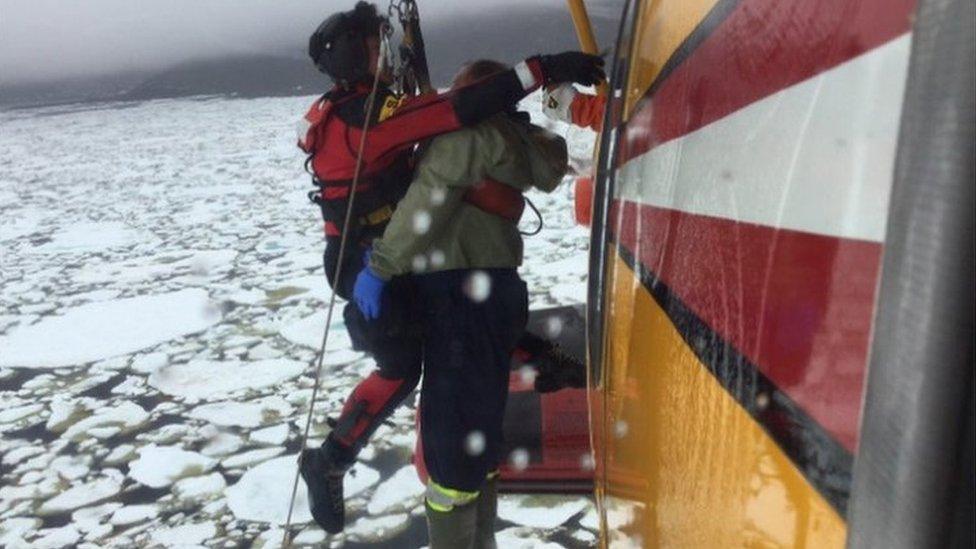
A fisherman rescued near La Scie after vessel gets trapped in the ice
Sullivan sees an opportunity to create an international market for Canadian northern cod, and rebuild the fishery infrastructure.
"People understand it's got to be done sustainably, but they can also see that this is something that's going to bring value back to communities, hopefully for years to come," he says.
But Tony Blanchard, the resource management director for DFO in the region, says "caution" is the current approach. The government will start making annual assessments of the stock in 2018.
Ryan Cleary, a former journalist and ex-federal politician, says fishermen are impatient and the industry, beyond cod, is in crisis.
"It's going to continue to heat up until it boils over," he says.
Cleary, along with Gillett, is trying to launch a splinter union - the Federation of Independent Sea Harvesters of Newfoundland and Labrador - in a bid to take on the FFAW.
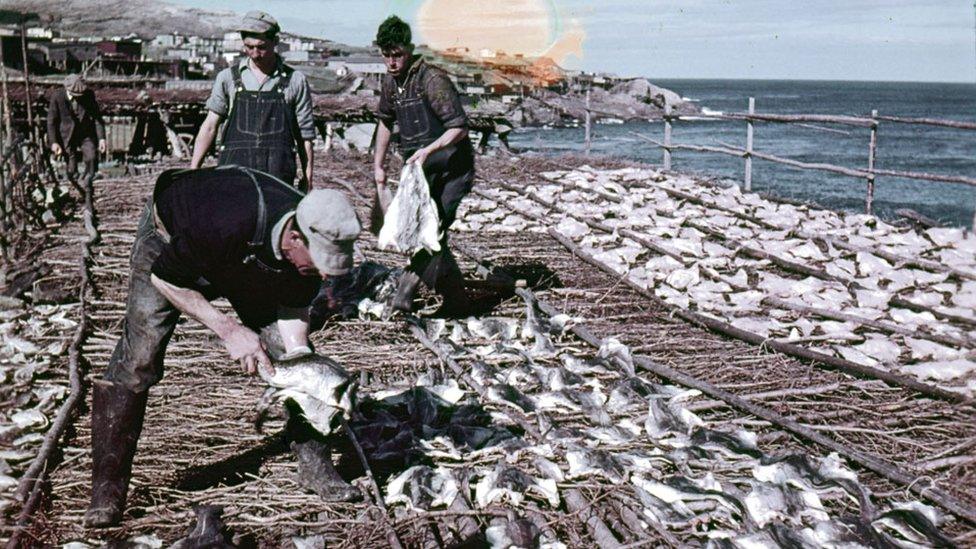
Cod being dried out in Pouch Cove, NL, in 1948
He says the independent, small boat operators need their own representation. FFAW says about 10,000 of the 15,000 workers they represent are inshore fishermen.
"The average Newfoundland and Labrador fish harvesters are dying out," he says.
Many coastal fishermen are now in their 60s, with few young people willing to take a risk in an industry that's been struggling for decades, or pay the upfront costs of training, licensing and buying a vessel.
Cleary and Gillett also believe the inshore fishery is facing an unprecedented crisis in many ways worse than the cod collapse, with stocks of most commercial species on the decline or delicate in terms of rebuilding.
"It hasn't gotten better, it's gotten worse." says Cleary. "We didn't learn anything from the moratorium."
Some independent scientists have been raising alarm bells about any imminent ramp up in the cod fishery.
Memorial University's Noel Cadigan says cod stocks are still fragile.
"You can catch more cod now. I don't think we're going to do irreparable harm but we certainly are delaying recovery of the stock," he says.
He worries DFO is under pressure from fishermen who see crab and shrimp stocks failing.
Cadigan and his colleagues say a better management plan - one that includes a timeline for recovery and defined targets along the way - is necessary.
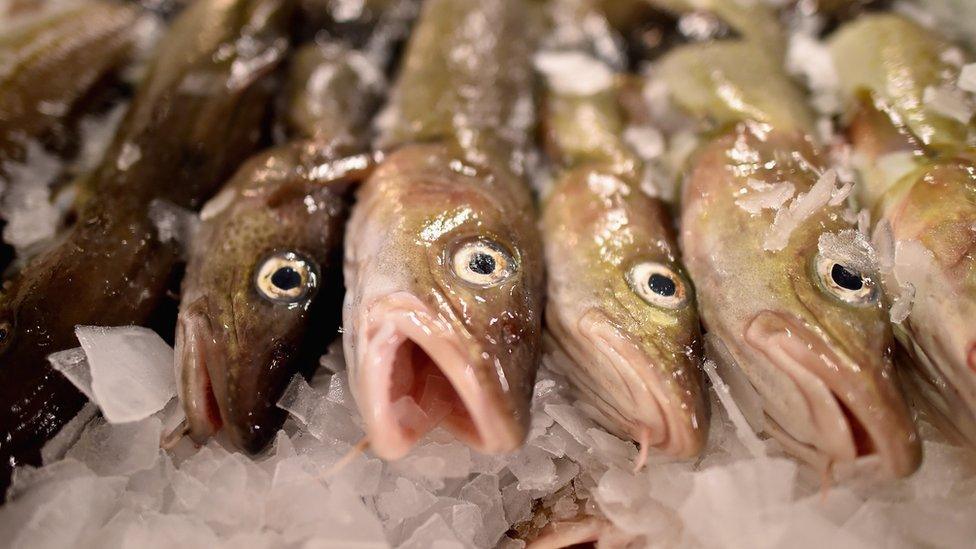
Cod on display at the Peterhead fish market on in Peterhead, Scotland
Back on the Petty Harbour wharf, Tom Best is frustrated and worried about what will happen if the moratorium is lifted.
He says politicians and agency staff, most of whom live thousands of kilometres away in Ottawa, were nowhere to be found in the last 25 years when it came to making tough decisions about the fishery's future.
"You could have hundreds of communities in this province prospering from the cod fishery if people just used their brains and their heads," the president of the Petty Harbour Fishermen's Cooperative says.
"People are geared up to do things that were destructive before the moratorium, and they're going to go right back to it again."
- Published5 June 2016

- Published8 June 2017
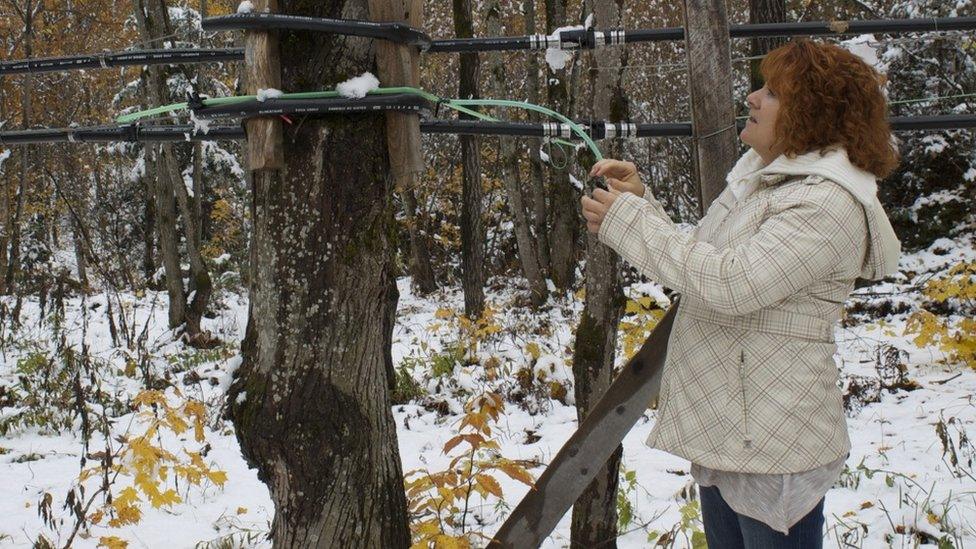
- Published17 December 2016
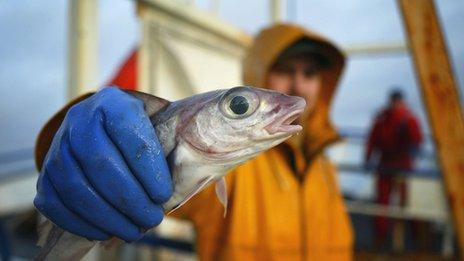
- Published6 February 2013
